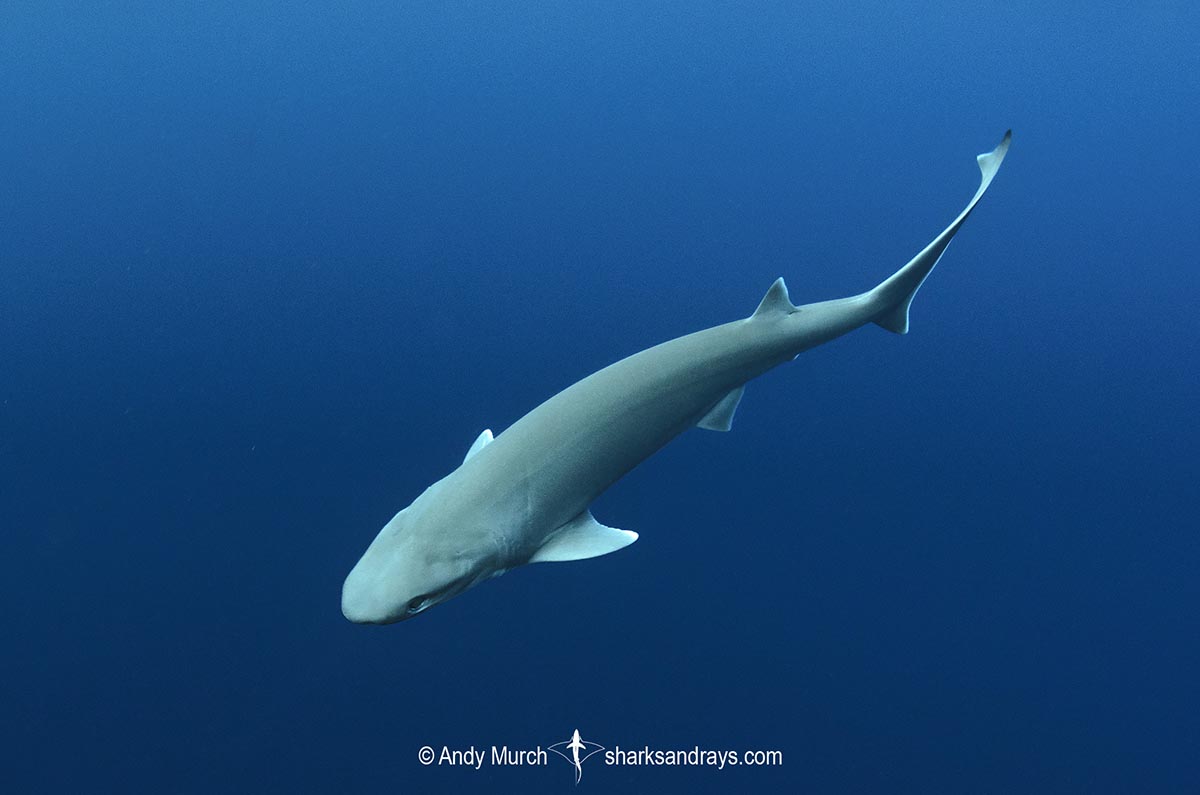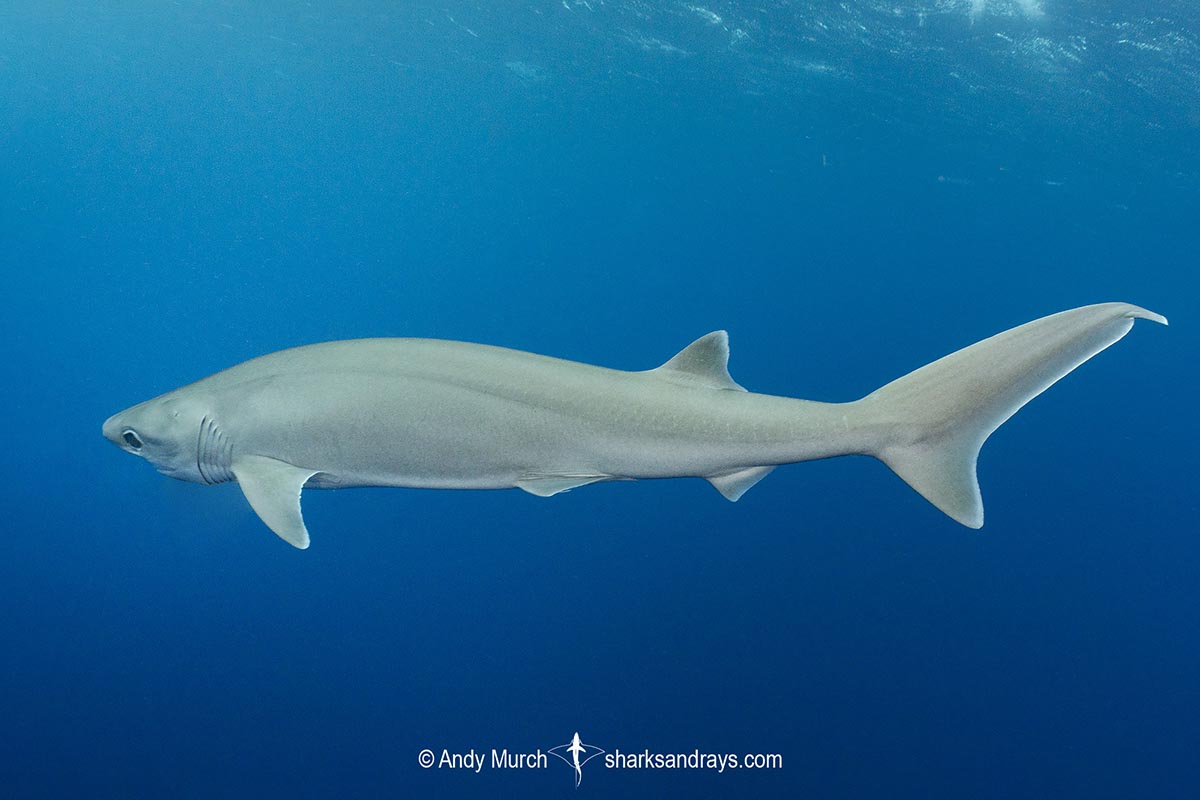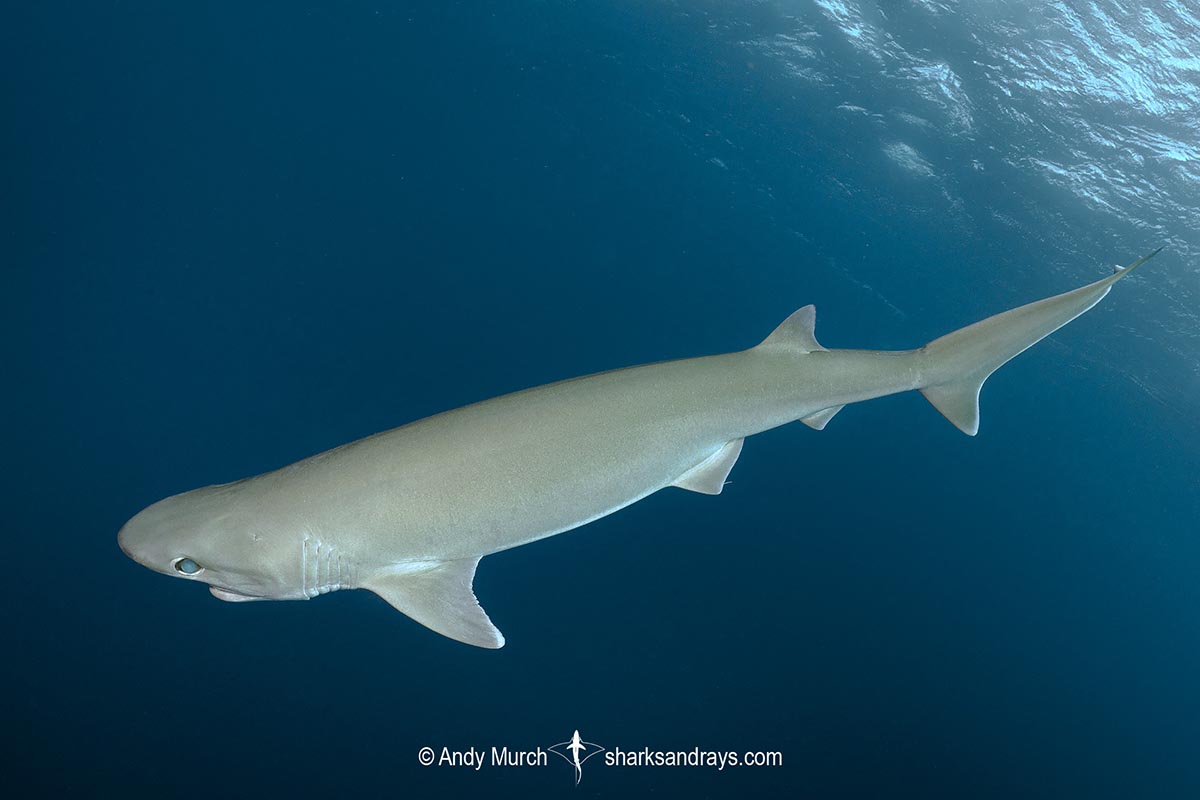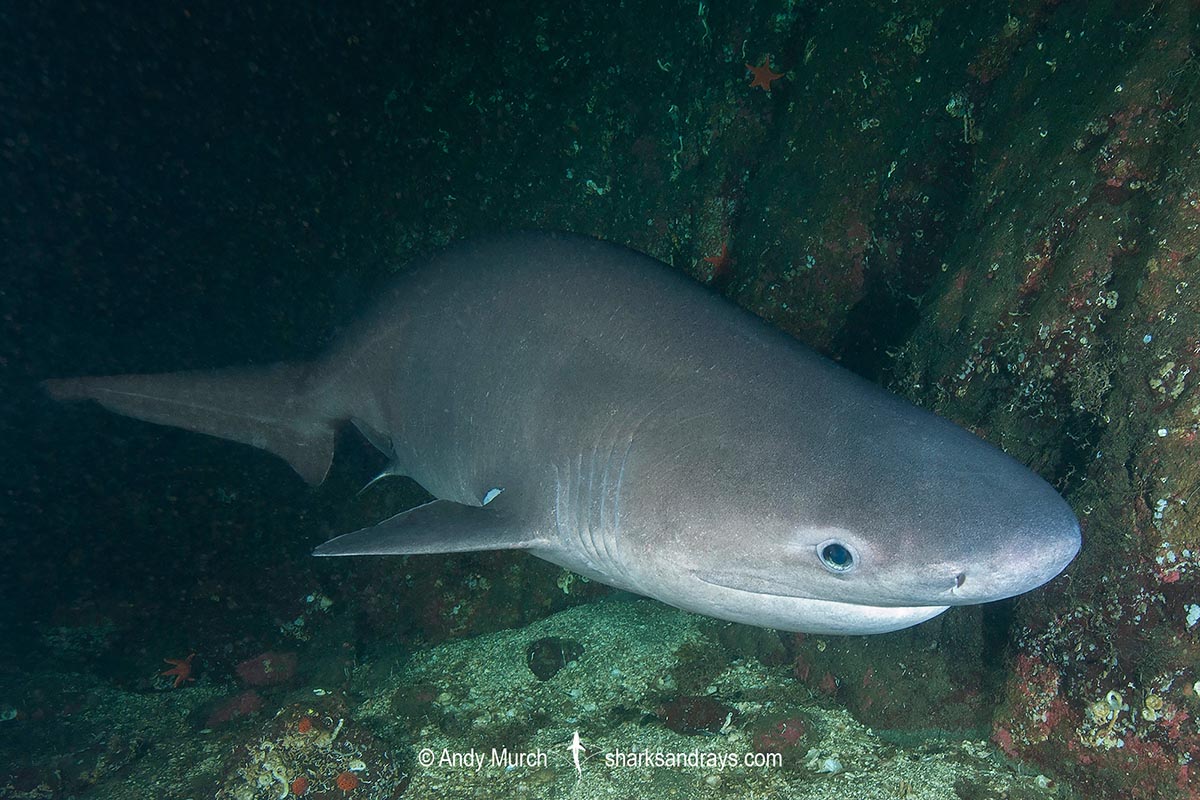Common names
Atlantic Sixgill Shark, Atlantic Bigeye Sixgill.
Binomial
Hexanchus vitulus.
Synonyms
None.
Identification
A relatively small cow shark with a somewhat pointed snout, large green eyes and six gill slits. Five broad, sawlike teeth on each side of the lower jaw. Single dorsal fin origin level with (or anterior to) free rear tips of pelvic fins. Dorsal fin has a vertical posterior margin. Pectoral fins relatively small and somewhat falcate. Pelvic fins low and long. Caudal fin has a distinct lower lobe. Upper caudal lobe deeply notched. Dorsal coloration grey-brown. Posterior margins of all fins white or pale. Tip of upper caudal lobe sometimes dusky or black. Ventral coloration pale.
Size
Maximum length Approx. 180cm.
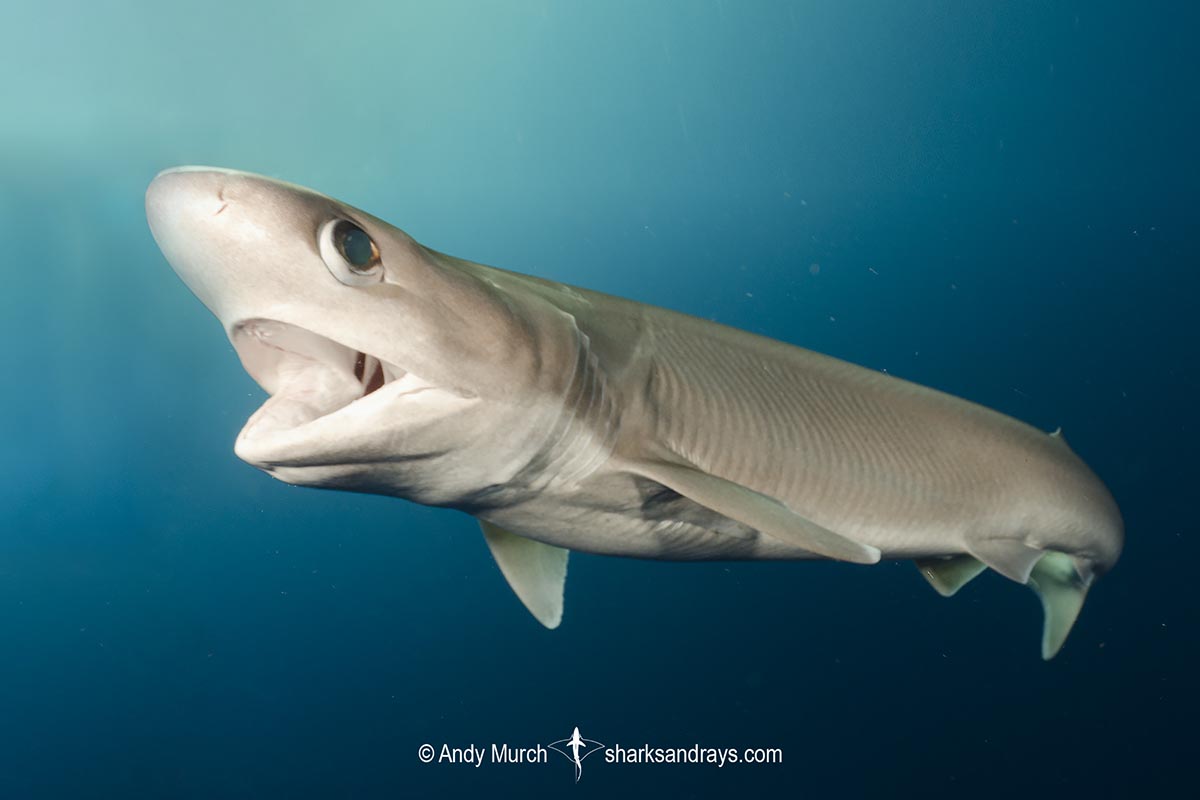
Conservation Status
LEAST CONCERN
The Atlantic Sixgill Shark (Hexanchus vitulus) is taken occasionally in deep demersal hook and line fisheries. It is also a bycatch component of the deepwater shrimp trawl fishery. However, captures are relatively uncommon and its wide range (which is largely unfished at that depth) affords the Atlantic sixgill some protection. No historical catch data is available but its low capture rate implies that the population is probably stable.
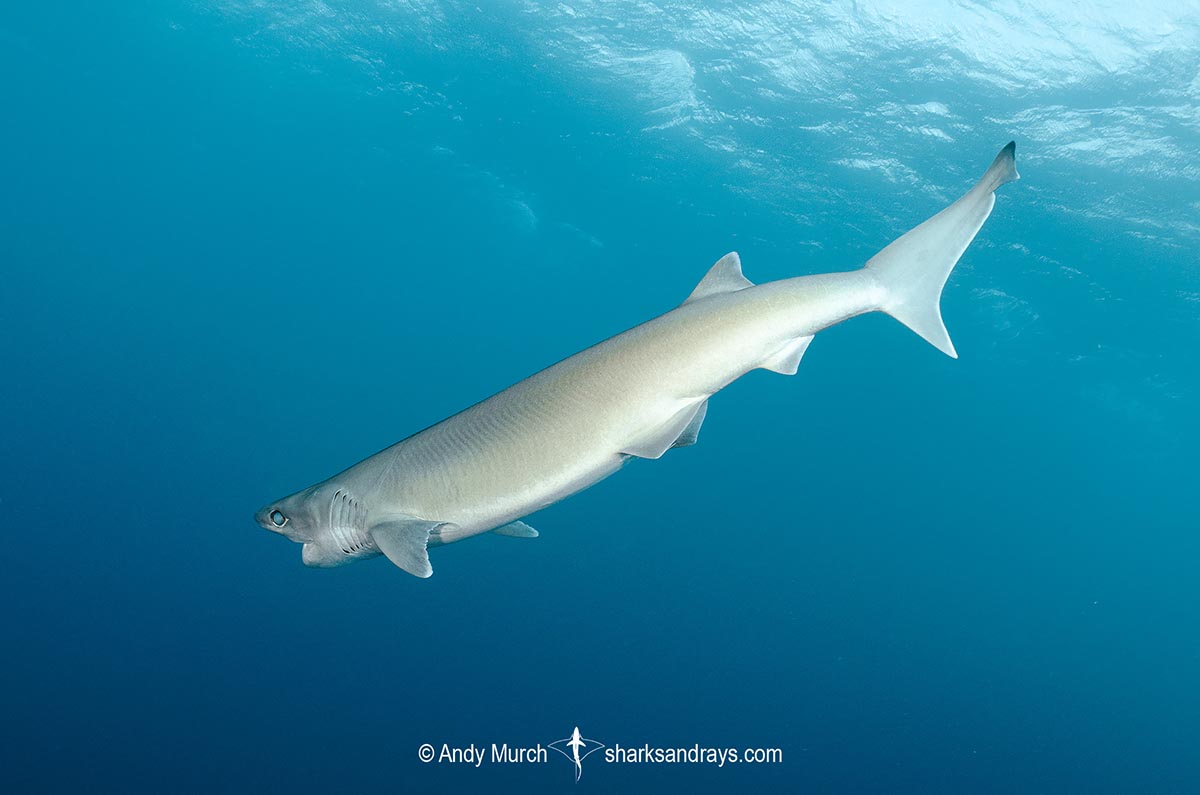
Habitat
A tropical but deepwater species. Probably confined to the continental shelf. Usually 90-621m but occasionally near the surface.
Distribution
The Atlantic sixgill shark has a patchy range within the tropical western Atlantic Ocean. Present in Florida, the northern West Indies, throughout the Gulf of Mexico, eastern Yucatan Peninsula, and Nicaragua to Panama. Considered abundant in the northern GoM (Jose Castro).
Reproduction
A viviparous species without a placenta. Litter size unknown but probably very large, like the closely related bigeye sixgill. Jose Castro reported 7-20 ripe oocytes (eggs) in each ovary in specimens taken in The Bahamas. Apparently, pregnancies occur year round.
Diet
Feeds on bony fishes and crustaceans. during a submersible dive at 465m in Bahamas, Castro reports a bigeye sixgill dashing towards a lane snapper (Lutjanus synagris), pinning it to the sea floor, and consuming it while standing on its head.
Behavior
A slow moving species but capable of explosive bursts of speed while pursuing prey. Little is known about the Atlantic sixgill shark’s behavior or migrations. Neonates 68-82cm in lengths have been captured near Panama City, Florida, indicating that the northern Gulf of Mexico may be a nursery area.
Reaction to divers
There are no records of Atlantic sixgill sharks being encountered by divers. While accompanying researchers from Cape Eleuthera Institute in The Bahamas, one specimen was tagged and released while I was in the water. This animal immediately turned away and headed for deep water.
Diving logistics
There are no opportunities to encounter this species on scuba. However, it has been seen from commercial and tourist submersibles in the Bahamas and the Cayman Islands.
Similar species
Bluntnose Sixgill Shark Differentiated by its greater size, heavier body, proportionately smaller eye, six instead of five teeth on each side of the lower jaw, and greater distance between the pelvic fins and anal fin.
Bigeye Sixgill Shark Atlantic and bigeye sixgills were once considered synonymous. In 2018, they were separated on the basis of molecular evidence. Bigeye sixgills are not present in the western Atlantic.

